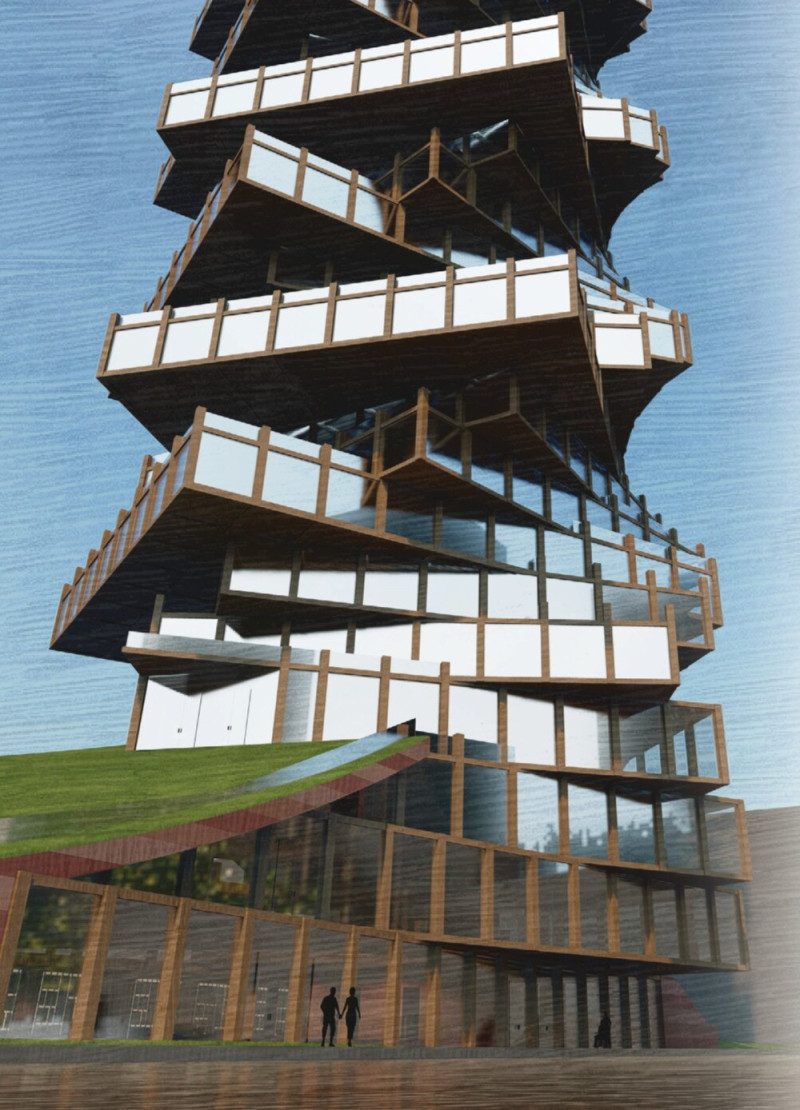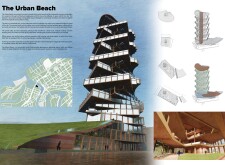5 key facts about this project
The project represents a thoughtful response to the challenges of urban living, particularly the increasing social isolation experienced in densely populated areas. By reimagining the waterfront as a multifunctional public space, it seeks to enhance the quality of urban life. The Urban Beach provides a blend of leisure, retail, and community-oriented spaces, allowing for various activities while encouraging inhabitants to connect with both each other and their surroundings. This approach highlights the importance of the public domain in nurturing community relationships.
Key details of the Urban Beach's architectural design include its distinctive multi-tiered structure, which resembles a series of cantilevered platforms that provide sweeping views of the river. This design choice serves dual functions: it maximizes visual engagement with the landscape while creating a series of social spaces that encourage interaction. The design emphasizes inclusivity with wide, open areas that can accommodate gatherings, events, and casual leisure activities, thereby promoting a sense of community.
Materiality is crucial to the project's identity. Timber plays a significant role in the construction, lending warmth and sustainability to the structure. The use of large glass panels enhances the connection between indoor and outdoor environments, fostering transparency and inviting natural light into communal spaces. These materials not only serve practical roles but also reflect a commitment to environmentally responsible building practices. Concrete is utilized for structural stability, ensuring the longevity and safety of the design while complementing the softer features of wood and glass.
The design incorporates various architectural ideas aimed at environmental sustainability and functional efficiency. For example, the structural form is intentionally designed to facilitate passive heating and cooling, reducing reliance on mechanical systems. This thoughtful integration of nature and technology creates a harmonious environment that resonates with users while minimizing ecological footprint.
Unique approaches characterize the Urban Beach project, including its emphasis on accessibility. The design has been crafted to ensure that individuals of all ages and abilities can navigate the space without barriers. This focus on inclusivity extends beyond physical access; the project seeks to create an environment where diverse community members feel comfortable and engaged.
Furthermore, the landscaping elements embedded in the design further enhance the environmental quality of the area. Lush terraces and planted areas invite biodiversity while providing spaces for relaxation and contemplation. This integration of green space within an urban context underscores the project’s commitment to fostering a greater connection between nature and city life.
To fully appreciate the depth of the Urban Beach project, readers are encouraged to explore its architectural plans, architectural sections, and architectural designs in detail. By examining these elements, one can gain a deeper understanding of the intricate relationships between form, material, and social function that define this project. The Urban Beach serves not only as a place for leisure but as a model for future urban development, emphasizing the importance of community spaces in enhancing the urban experience. For further insights into this architectural endeavor, delving into its design specifics will reveal the underlying ideas that make this project a significant addition to Cleveland's urban landscape.























